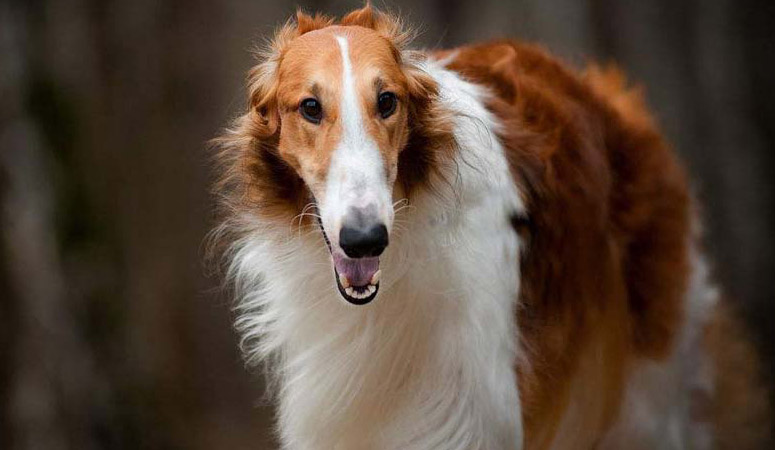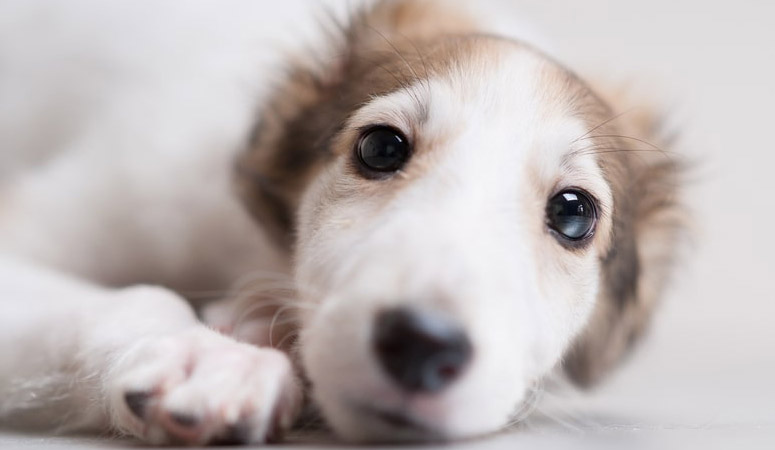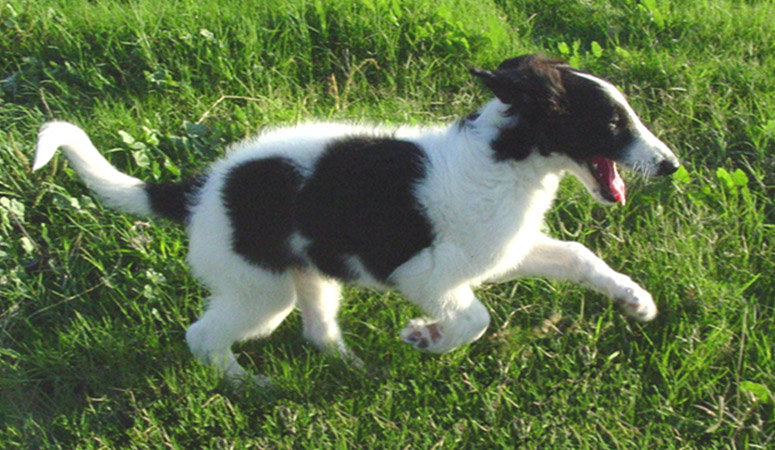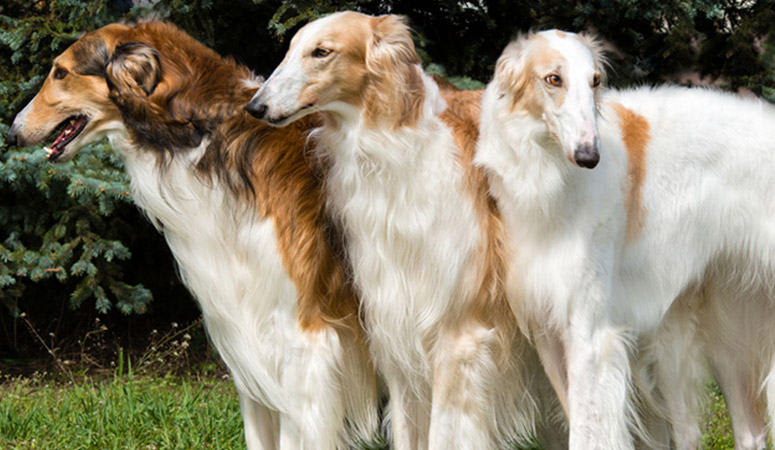Borzoi
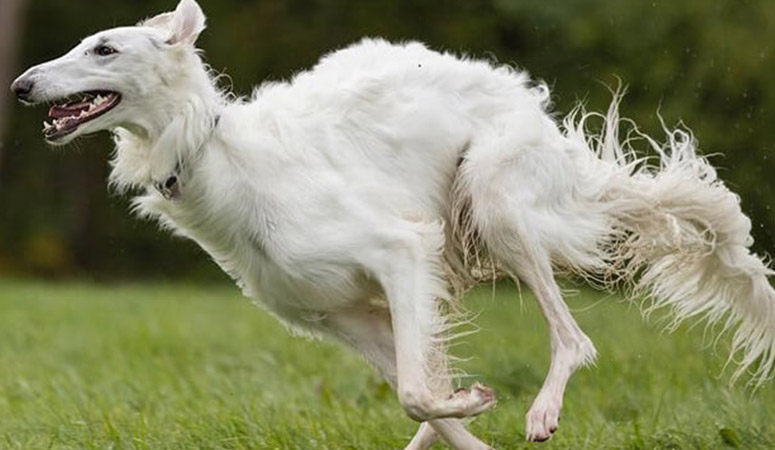
The Borzoi dog breed was developed in Russia as a coursing and hunting dog, they have a long, silky coat that can help them protect against cold climate and snow. The noble Borzoi is cherished for his calm, agreeable temperament, and they historically became popular as hunting companions to the Russian aristocracy.
| Other Names | Barzoi, Borzaya, Russian Hunting Sighthound, Russian Wolfhound, Russkaya Psovaya Borzaya |
| Color | Black, Gray, Red, White |
| Height | Males: 28-34 inches. Females: 26-31 inches. |
| Weight | Males: 75-105 pounds. Females: 55-90 pounds. |
| Life Span | 9-14 years |
| Personality | Affectionate, Loyal, Regally Dignified |
| Exercise | Energetic |
| Origin |
| Popularity | #105 |
| Groom Needs | Weekly |
| Kids Friendly | No |
| Dog Friendly | Yes with supervision |
| Watch Dog | |
| Family Dog | Yes |
| Litter Size | 3-11 |
Borzoi Pictures
Borzoi Video
Introduction
“The future of mankind belongs to its mongrels and not to its handsome but brainless Borzois.” – George Bernard Shaw
Such a luxurious dog, the Borzoi–and why not–he comes from Russian aristocracy and adds richness to anyone’s home. It’s no wonder that this dog has often featured on the covers of stylish magazines in his lifetime! The Borzoi stands around 32 inches at the shoulders and weighs around 120 pounds. Borzois are fast, independent dogs, bred to follow their nose. So if it catches a scent, it can run off. Keep him on a leash when walking or in a fenced garden. The Borzoi has long, silky coat, often with wavy type hair. This beautiful coat will need weekly brushing, and more so during seasonal shedding time. Any coat color is acceptable for the Borzoi. Socialization from puppyhood will be required to develop a dog that will love spending time with his family – they don’t demand a lot of attention. Borzois aren’t the best dogs to have where there are small children around – he doesn’t want to be touched all the time. The Borzoi enjoys a couple of walks and the opportunity to run around outdoors, but really, they are laidback and easy companions to have.
Living with Borzoi
The Borzoi has a beautiful silky texture that is resistant to dirt and mud, usually, it is easy to keep clean. But they do shed a bit like other long-coated dogs, a quick brushing every day or two with a pin brush, slicker brush, and a comb will help remove the loose hair and dirt from the coat. And during the shedding seasons, they require more frequent brushing. A regular brushing could help remain their coat clean and look neat, or bath your dog as needed.
The owner needs to brush your dog’s teeth several times a week to remove tartar buildup and the bacteria that lurk inside it, and daily brushing is better to keep fresh breath and prevent gum disease. Check and clean the ears to prevent bacterial or yeast infections from developing. Besides, trim the nails regularly to prevent painful splitting, cracking, or breaking.
Generally, Borzois are not high-energy dogs, but activity levels are different from individuals. Most of them need daily exercise, which can be in the form of long walks or running in a securely fenced yard. It is not advisable to allow your Borzoi to run loose, because they are capable to chase anything that moves as sighthounds, and it is better to ensure your dog in an enclosed area or on a leash. Besides, Borzois like doing activities with their owners, they are good candidates for canine sports and excel in agility training and lure coursing.
Borzoi puppies consume more food than adults due to their rapid growth. Generally, it is recommended to feed a Borzoi with four to eight cups of high-quality dry dog food every day, divided into two meals. And there should be clean and fresh water at all times. More importantly, the food amount should depend on the dog’s weight, size, age, and activity level.
Some dogs are easy to get overweight, so you need to watch their calorie consumption and weight level all the time. Treats may be an important aid in training, but excessive intake can lead to obesity. Also, owners need to distinguish which human food is safe for dogs and which are not. If you have any problems with your dog’s weight or diet, just consult from your veterinarian.
Borzois are prone to the following health conditions: progressive retinal atrophy, affects joints and cartilage, elbow and hip dysplasia, osteochondritis dissecans, progressive retinal atrophy, cardiac concerns, cancer, most often osteosarcoma, osteochondritis dissecans (OCD), etc.
Major concerns: gastric torsion
Minor concerns: hypothyroidism, cardiomyopathy
Occasionally seen: degenerative myelopathy (DM)
Suggested tests:
Cardiac Exam
Thyroid Evaluation
Ophthalmologist Evaluation
Degenerative Myelopathy DNA Test
Total Annual Cost: $3235
Cost is estimated for the first year and may vary depending on many factors, such as dog food, health care, leash, collar, licensing, possible fencing, crates, training and obedience classes, dog-walking, grooming, treats, toys, flea, tick, and heart-worm meds, microchips, etc.
Borzois are not very easy to training although they are intelligent and very affectionate. Because their hunting heritage makes them have minds of their own, they are also independent and sometimes stubborn, so training may be a challenge for them.
And they would get bored quickly with repetition, so it is suggested to keep training sessions short and interesting. Owners could use constant positive reinforcement to train your Borzoi. Never use intimidation to train your dog.
Besides, it is very important to start early socialization and puppy training classes. Exposing the puppy to positive experiences with a wide variety of people, places, and situations will help him develop into a well-adjusted adult.
History
The Borzoi was thought to originate from Russia and was officially recorded for the first time in 1650. Some say lavish Russian aristocrats fashioned this dog. The story goes about a Russian duke who wanted a hunting dog that could run like the wind. He ordered a lot of Arabian greyhounds, realizing they could run, but not survive the winter cold. So he ordered more, crossing them with Russian sheepdogs which had thick coats. The new breed he developed was fast and could deal with the cold. Hunters used the Borzoi as a hunter, to find wolves. They would hunt in huge packs of more than a hundred, preying on wolves, and then wait for the hunters to catch up with them. When the serfs were emancipated in Russian in 1861, the nobles couldn’t afford such lavishness anymore and the Borzoi breed nearly died out. Fortunately, devoted fanciers kept them going.
These dogs have incredible vision – hence their name “sighthounds”. Their eyes are almond-shaped, placed in the front of their heads, giving them a 270-degree field of sight which is different to humans of 180 degrees. Their amazing vision helps the dogs to spot their prey from far distances.
The first Borzoi came to America from England by William Wade of Hulton, Pennsylvania in 1889 – known as the Russian wolfhound. The name only changed to Borzoi later and it means “swift” in Russian.
The very first Borzoi to register with the American Kennel Club was Princess Irma. It was in 1891 and now they are a rare breed.
Helpful Information
Breed Club: BORZOI CLUB OF AMERICA, INC.
Breed Club Link: https://www.borzoiclubofamerica.org/
Breed Club Rescue: National Borzoi Rescue Foundation
Breed Club Rescue Link: https://www.rescueborzoi.org/

